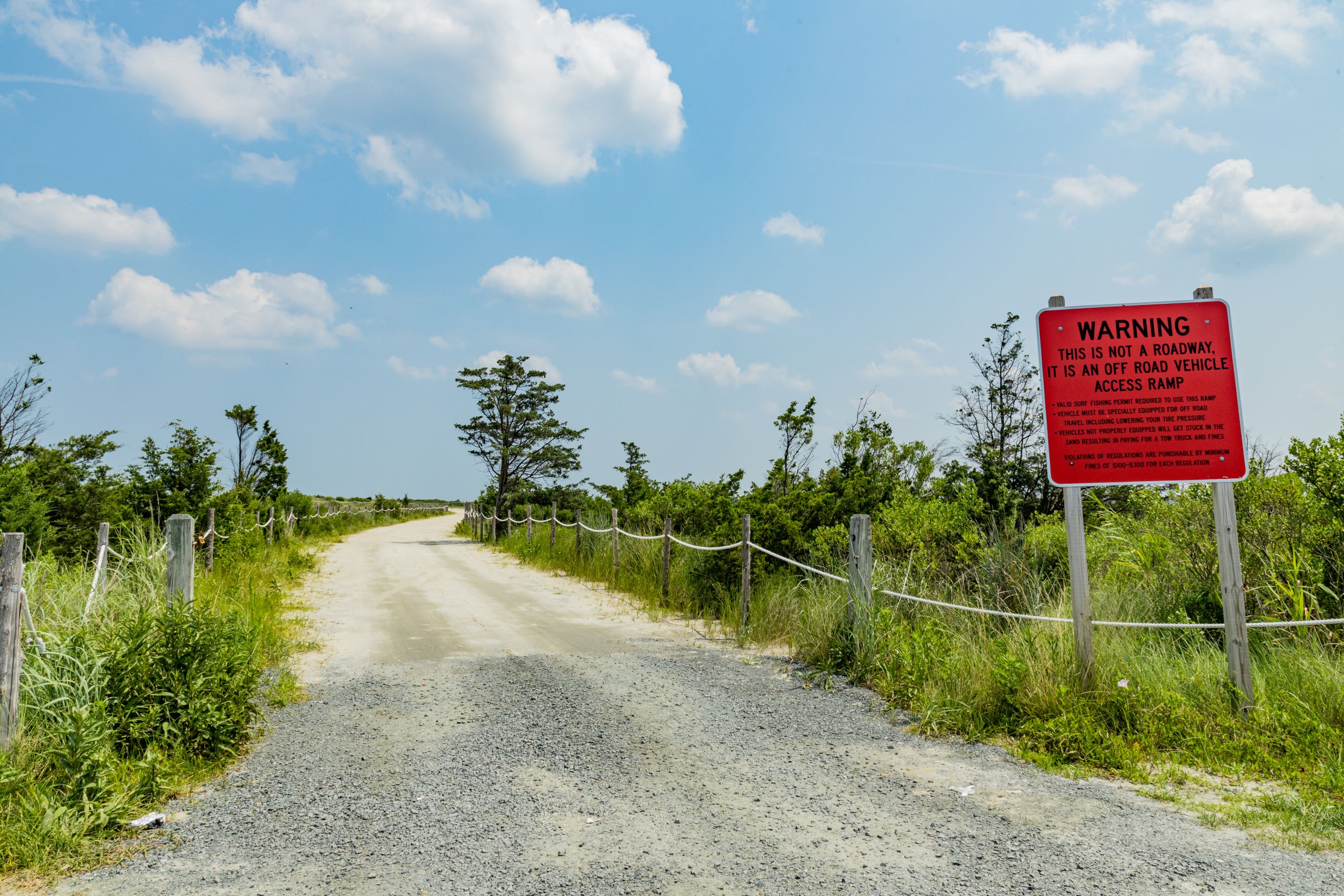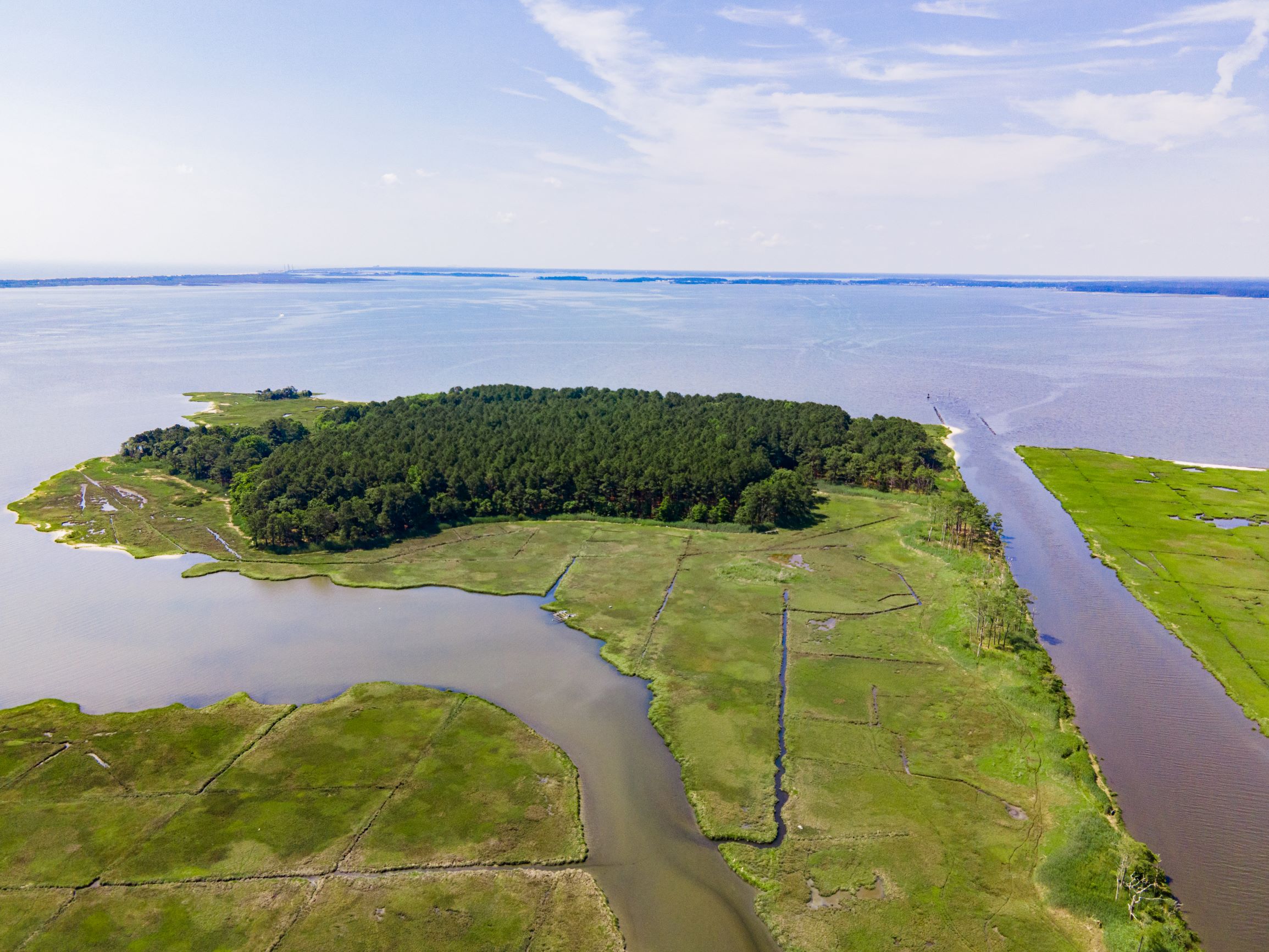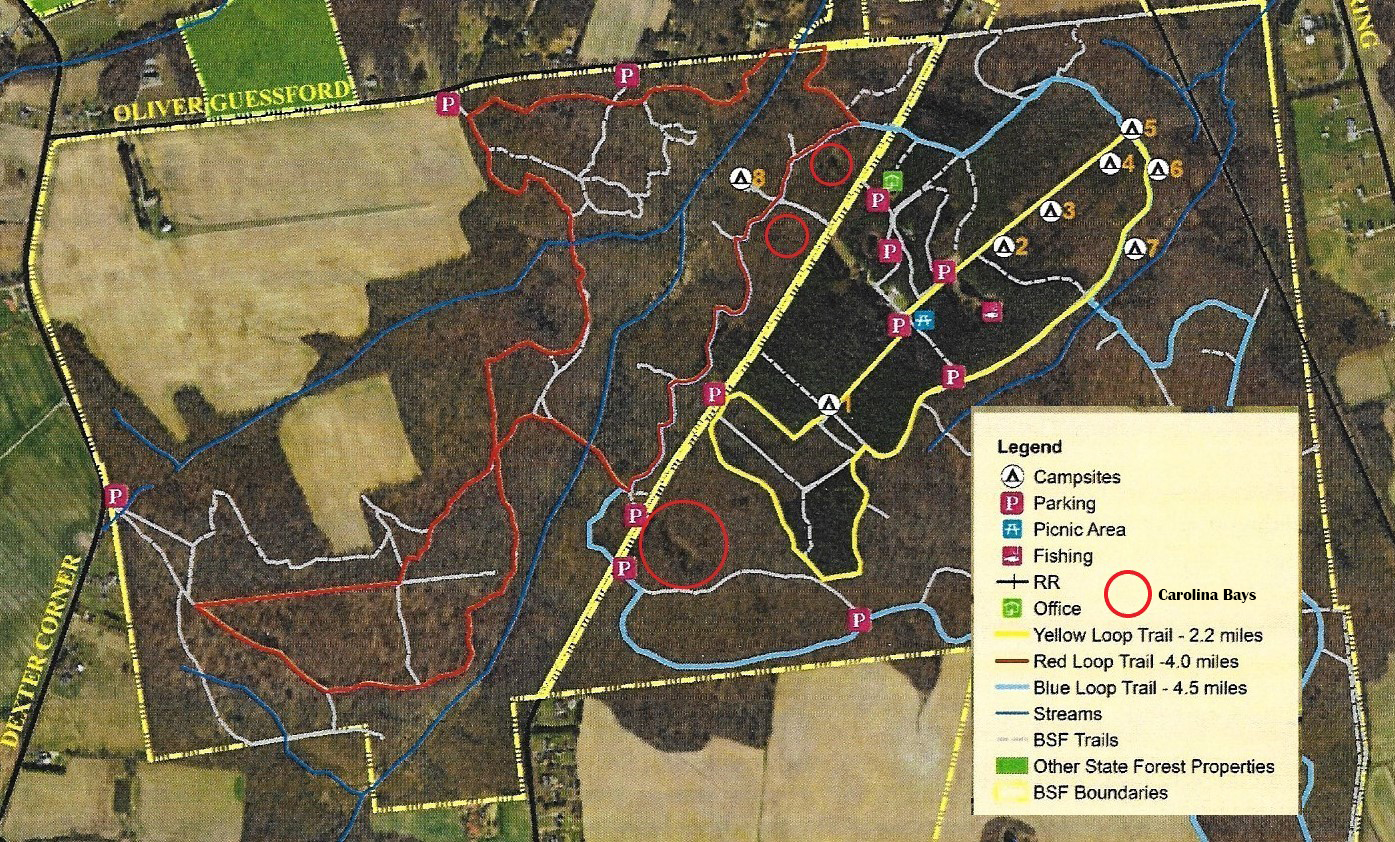
August 3, 2021
By Melanie Cucunato, Natural Heritage Program Manager at Delaware State Parks
The Nature Area Preservation Program
The State of Delaware enacted Title 7 Delaware Code, Chapter 73: Natural Areas Preservation System on February 10, 1978. This legislation and the subsequent regulations were passed to provide the State of Delaware, through the Department of Natural Resources and Environmental Control (DNREC), the ability to dedicate public and private nature preserves, identify and maintain a state‑wide Natural Areas Inventory, and establish a Natural Areas Advisory Council to review and make recommendations to the Department Secretary. Dedication of a property occurs only with the voluntary participation of the landowner.
The definition of a natural area is an area “of land or water, or both land and water, whether in public or private ownership, which either retains or has re‑established its natural character (although it need not be undisturbed), or has unusual flora or fauna, or has biotic, geological, scenic or archaeological features of scientific or educational value” (Natural Areas Preservation System, 7 Del. Code C. 73).
The Natural Areas Inventory includes 70 designated natural areas within the State of Delaware. In selecting a State-recognized natural area, the Office of Nature Preserves, in conjunction with the Natural Areas Advisory Council, evaluates a site based on the following criteria:
- Representativeness
- Biological rarity
- Uniqueness
- Diversity
- Size
- Viability
- Defensibility
- Research, education, or scenic value;
- Outstanding geological, archaeological, or aquatic features
Sites can be added or de-listed from the inventory.
Nature Preserves
A “nature preserve” as defined by law is a natural area, any estate, interest, or right in which has been formally dedicated under 7 Del.C. §7306. As of June 2020, there are 34 dedicated Nature Preserves in Delaware. Numerous other possible additions to the nature preserve program exist within each county. Nature preserve dedication is the highest legal land protection available within the State.
Nature Preserves to Hike Near You (New Castle County)
Bellevue Woods Nature Preserve
The Bellevue Woods Nature Preserve is located within Bellevue State Park. Consisting of three parcels of land, the preserve adds up to about 33 acres of upland forest. Bellevue Woods Natural Area is one of the very few remaining mature forests in the lower Delaware River watershed. Visitors will find forests consisting of tall black and red oaks mixed with large, mature tulip poplar trees.

Blackbird Carolina Bays Nature Preserve
Carolina bays, also called sinkholes, whale wallows, or round ponds, are circular to oval depressions, usually having a depth that can vary from a few to 20 feet. They formally occur, several hundred in number, in a general band running diagonally from southeastern New Castle County to northwestern Kent County. Many of them have since been drained or filled. This band of Carolina bays is also an area where Miocene ages clays are close to the surface, the water table is high, and soils are eroded. There are many theories as to how Carolina bays are created. Some say it is the result of an ancient meteorite impact, others the melting of the stranded ice debris originating from Pleistocene glaciation. No matter how they were created, there is one thing that is for sure: Carolina bays are a biological and geological enigma. The Blackbird Carolina Bays Nature Preserve can be found within Blackbird State Forest.

Blue Loop Trail
Brandywine Creek Valley, Tulip Tree Woods, and Freshwater Marsh Nature Preserves
The Brandywine Creek Valley, Tulip Tree Woods, and Freshwater Marsh Nature Preserves can be found throughout Brandywine Creek State Park. Consisting of 3 parcels of land, these three nature preserves add up to 48 acres of land. Previously owned by members of the DuPont family, the wooded portions of this area have been relatively undisturbed for the past 200 years. Elevations range from 250 to 322 feet above sea level and the water quality and air quality in this area is nothing less than superb. The freshwater marsh supports biodiverse populations of reptiles and amphibians, birds, and mammals. This includes the secretive Muhlenberg (or bog) turtle, which has been found in only four localities within the State of Delaware. Visitors of these nature preserves will be able to explore the freshwater marsh, be in awe of the old-growth tulip tree forest and find many more reasons to fall in love with the pristine habitats found here.

Tulip Tree Woods at Brandywine Creek State Park
Flint Woods Nature Preserve
The Flint Woods Nature Preserve consists of eight parcels of land that add up to 208 acres. The State has promoted a successful hunting program within this nature preserve for several years, which aids in controlling the white-tailed deer populations. Visitors will find themselves exploring the largest acreage of superior old-growth hardwoods in Delaware.

Lums Pond Woods Nature Preserve
The Lums Pond Woods Nature Preserve can be found at Lums Pond State Park. This nature preserve is 150 acres of mixed hardwood forest and forested freshwater wetlands. During the spring, visitors are encouraged to walk the Whale Wallow trail and listen for the spring peepers or visit the Nature Center!

Little Jersey Trail at Lums Pond State Park
Pea Patch Island Nature Preserve
The Pea Patch Island Nature Preserve is located on Pea Patch Island and consists of 167 acres. This unique and spectacular area exists because of man-made disturbance as it is the site of historical Fort Delaware. On this island is one of the largest heronries in the northeastern United States. This heronry is nesting grounds for nine different species of birds of the order Ciconiiformes – herons, egrets, and ibis. A Bald Eagle’s nest was also identified on the island during the summer of 2020. When visiting Fort Delaware, visitors are encouraged to also take a stroll down the trail and look out at the heronry from the overlook.

White Clay Creek Nature Preserve
The White Clay Creek Nature Preserve is the second largest nature preserve in the State of Delaware consisting of 762 acres. Despite its location within a general area that has experienced a residential and industrial boom, White Clay Creek, its flood plain, and adjacent valley slopes between the Pennsylvania state line and the northern city limit of Newark have remained remarkably free of human development and notable for unspoiled beauty. The White Clay Creek Nature Preserve is the home to diverse flora and fauna, including rare and endangered species.

Kent County
Fork Branch Nature Preserve
The Fork Branch Nature Preserve is located in Dover, Delaware. With 325 acres, this Nature Preserve features a one-mile loop trail through mature forests, wetlands, and the Fork Branch stream. Studies within the Anne McClements Woodland have findings of several rare and uncommon beetle species, many of which are indicators of high-quality, mature deciduous forests with ample dead tree habitat.

Sussex County
Angola Neck Nature Preserve
The Angola Neck Nature Preserve is located approximately twelve miles from Cape Henlopen State Park in eastern Sussex County, Delaware. Consisting of several tracts of land, the Preserve is situated on a peninsula bounded by Rehoboth Bay to the east and Herring Creek to the west within Delaware’s coastal plain. The parcels add up to just about six hundred acres of upland forest, salt marsh, bay beach, and a portion of the globally rare Cherry Walk sea-level fen. Angola Neck Nature Preserve is the home to 27 known rare plants and six known species of rare animals.

Visitors of Angola Neck Nature Preserve can start their journey by making their way down Camp Arrowhead Road. On the right, there will be a small parking area for visitors to park their vehicles. Visitors can walk to the end of Camp Arrowhead Road and follow the trail out to Rehoboth Bay.

The trail to Rehoboth Bay
Barnes Woods Nature Preserve
The Barnes Woods Nature Preserve is within the Nanticoke River Natural Area. This 23-acre oak-pine forest is bounded on two sides by tidal creeks and a swamp floodplain. This forest is a fine example of the Sussex County landscape as it existed before European settlement. This mature, undisturbed woodland is one of the few places in the county never cultivated, thereby preserving a rich biological and archaeological record. There are no parking facilities available, but visitors are able to park on the side of the road at the trailhead.

Beach Plum Island Nature Preserve
Beach Plum Island Nature Preserve was established to protect and maintain the barrier spit, its flora and fauna, and its unaltered geological processes. With a total of 121 acres, the barrier spit ecosystem at Beach Plum Island, encompassing beach, dune, tidal marsh, and riverine habitats is a dynamic system that is susceptible to damage caused by unregulated human activity. Dunes, and the vegetation that is integral in their creation and persistence, are extremely susceptible to damage from trampling by humans.

Visitors are allowed on certain portions of the Nature Preserve, subject to the policies of the Department of Natural Resources and Environmental Control, Division of Parks and Recreation. Visitors are to use only those areas designated for activities like surf fishing.

Milford Millponds Nature Preserve
The Delaware Nature Society’s Abbotts Mill Nature Center is located within the Milford Millponds Nature Preserve. Visitors are encouraged to learn more about this Nature Preserve by visiting the Delaware Nature Society’s website.

Rehoboth Bay Marshes Nature Preserve (Burton Island) at Delaware Seashore State Park
The Rehoboth Bay Marshes Nature Preserve is located within Delaware Seashore State Park. Named Burton’s Island, this 222-acre island habitat harbors a saltmarsh with coastal plain loblolly pine and mixed hardwood upland forest.

Burton Island
Thompson Island Nature Preserve
Thompson Island is a rare and exciting site that was first brought to attention in the 1940s when an ossuary was discovered. An ossuary is defined as a chamber or facility used to store human skeletal remains. The ossuary dates from either a very late Woodland Period or Contact time, circa 1630, and undoubtedly relates to the Slaughter Creek Phase occupation which was concentrated around Lewes and documented by the first Dutch settlers. The archaeological significance of Thompson Island made it a prime candidate for dedication as a Nature Preserve. Spanning 206 acres, Thompson Island has a pedestrian trail for visitors to enjoy the upland forests and marshes of this historical land.

Know Before You Go- Restrictions
Stay on Trails
Staying on the existing trails ensures the protection and safety of both you and the wildlife that calls these nature preserves home. When you stay on the existing trails, you are less likely to accidentally trample any endangered plants or animals.
Carry In/Carry Out
What you carry in is what you should be carrying out. Making sure you are not leaving anything behind, like litter or other belongings, as well as not taking anything out of the preserve, like rocks or shells, allows us to keep our nature preserves happy and healthy!
Leave No Trace
The purpose of a nature preserve is to – quite literally – preserve nature. When we leave no trace in our nature preserves, we are ensuring it will be there for future generations of Delawareans.
Okay Activities
No two nature preserves are the same. Some allow trails for the public to access, some allow hunting, and others are completely closed off. What influences the decision to allow the public to enjoy the nature preserve depends on the sensitivity of the habitat we are trying to protect. The more endangered/rare species there are within an area, the more protected we want to keep that area. Think about it – if you were a rare frog happy in your small pond home, would you want people in your living room every day? These activities are ones that are encouraged in most of the preserves:
-
- Wildlife photography
- Birding
- Environmental interpretation
Learn more about Nature Preserves of Delaware




